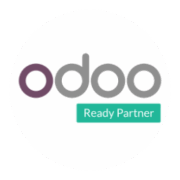What is Brand Identity?
Brand identity is the collection of all elements that a company creates to portray the right image to its consumers. This includes your logo, colors, typography, messaging, and overall style. A strong brand identity helps your business communicate its values, personality, and promises to the target audience.
Key Steps to Create a Brand Identity
- Define Your Brand’s Purpose and Values
Before you start designing logos or picking colors, you need to define what your brand stands for. Ask yourself:
- What is the mission of your business?
- What are the core values that drive your business?
- What promises do you make to your customers?
Exercise: Write a mission statement that captures the essence of your brand. For example, if you’re starting an eco-friendly clothing line, your mission might be: “To provide stylish and sustainable clothing options that reduce our environmental footprint.”
- Understand Your Target Audience
Knowing your audience is crucial for creating a brand identity that resonates with them. Conduct market research to understand their needs, preferences, and behaviors.
Example: If your target audience is young, tech-savvy professionals, your brand identity should reflect a modern, innovative, and dynamic image.
- Create Your Brand Personality
Your brand personality is the human characteristics that are attributed to your brand. Is your brand fun and playful, or serious and professional? Defining this will guide your visual and verbal communication.
Quote: “Your brand is what other people say about you when you’re not in the room.” – Jeff Bezos
Exercise: Choose three to five adjectives that describe your brand’s personality. For example, Apple might use words like innovative, sleek, and user-friendly.
- Design Your Visual Identity
Your visual identity includes your logo, color palette, typography, and imagery. These elements should consistently reflect your brand’s personality and values.
- Logo: Create a simple, memorable logo that represents your brand. Think of iconic logos like Nike’s swoosh or Apple’s apple.
- Color Palette: Choose colors that evoke the right emotions and are aligned with your brand personality. For example, blue often conveys trust and professionalism, while red can signify excitement and energy.
- Typography: Select fonts that are easy to read and complement your brand’s style. Consistency in typography across all materials is key.
Example: Coca-Cola’s red color and cursive font are instantly recognizable and convey a sense of tradition and excitement.
- Craft Your Brand Voice
Your brand voice is how you communicate with your audience through text, whether it’s on your website, social media, or marketing materials. It should be consistent and reflect your brand personality.
Exercise: Write a few sample social media posts or product descriptions in your brand voice. If your brand is playful, use a casual, fun tone. If it’s professional, use a more formal, authoritative tone.
- Develop Your Brand Story
Your brand story is a narrative that encompasses your mission, values, and the journey of your business. It should be authentic and engaging, connecting emotionally with your audience.
Example: TOMS Shoes shares the story of its one-for-one model, where every purchase helps a person in need. This story resonates deeply with socially conscious consumers.
- Apply Your Brand Consistently
Once you’ve defined all the elements of your brand identity, it’s crucial to apply them consistently across all touchpoints. This includes your website, social media profiles, packaging, and any other customer interactions.
Smart Humor: Think of your brand as a character in a movie. Whether it’s the hero, the sidekick, or the mentor, it needs to stay true to its role throughout the entire story to make sense and be believable.
Conclusion
Building a strong brand identity from scratch involves defining your purpose, understanding your audience, creating a brand personality, and developing a cohesive visual and verbal identity. Consistency is key, as it ensures that every interaction reinforces your brand’s image and message.
By following these steps, you can create a brand identity that not only stands out in the marketplace but also builds lasting connections with your audience. Remember, your brand is the story you tell and the promise you keep.
Quote: “A brand is a voice and a product is a souvenir.” – Lisa Gansky
Invest time and creativity in building your brand identity, and it will pay off in the form of customer loyalty, trust, and recognition.





